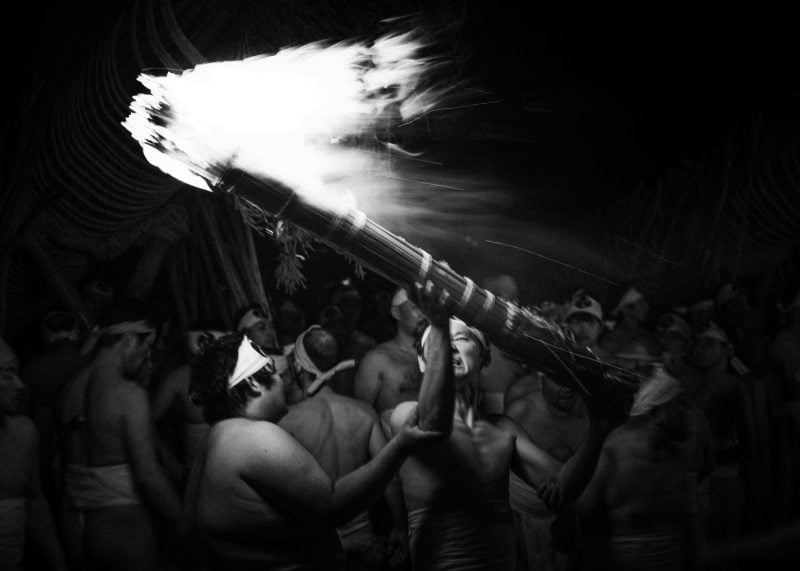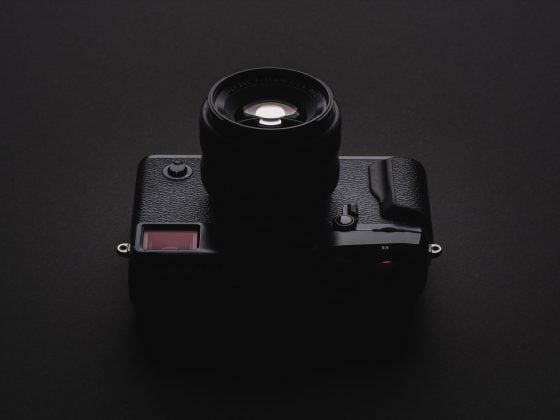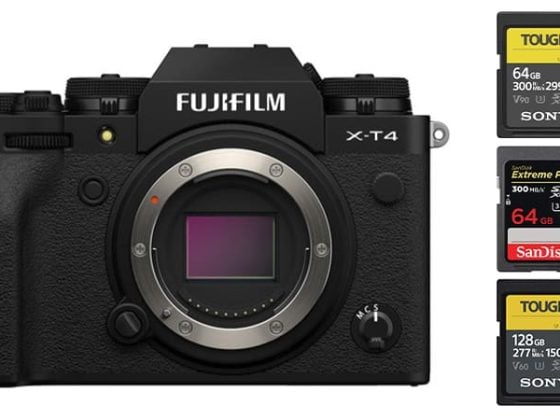I’m seeing something strange happen with Nikon that I’m not really seeing with any other camera out there. That is, I see a lot of buzz about Nikon on my site and it’s constant.
I’ve done only a few articles regarding Nikon cameras probably around 10, I praise them when praise is due like I do with Canon, Sony and Fujifilm cameras. Not really anymore or any less than I have my EOS R. But l get a few comments almost every single day about the Nikon Z6.
“Should I buy the Nikon Z6 or the Fujifilm X-T3 or X-T4.” “I sold my X-T3 for a Nikon Z6.” “Your right the Nikon Z6 lenses are amazing.” “How’s the Nikon Z6’s autofocus.” “What Nikon lens has the most character.” “How is the 35mm vs the 50mm.”
So many questions about the Nikon all the time and my site is mostly dedicated to the Fujifilm camera system.
So what I think is happening is there is an almost void of positive articles about Nikon cameras online and people are searching for positive or non-biased info about Nikon cameras. As you guys that know me to know, I bought the Z6 as an experiment. From all the social feedback the camera was getting I thought there was no way the camera was as bad as everyone was making it out to be so I had to try it out for myself and I quickly realized from specs alone, it was by far the superior full-frame mirrorless camera of the time.
I immediately fell in love with it even with all the flaws from early firmware. There was/is something about the Z6 that was special that all the other brands were missing which is impossible to explain but has a lot to do with usability and friendliness. It just seemed kinda perfect, with a few flaws of course. I bet the same is true with the Nikon D6. On paper, the Canon 1DX III offers a lot more, but I have a sneaky suspicion that if you were to use both cameras in a professional sports setting, there would be something magical about the D6 system that would put it apart from the Canon in a unique and special way.
For example, I’m already seeing people say that the faster mechanical shutter on the Canon 1DX III causes inferior AF tracking. So maybe Nikon realized this and intentionally did not use a faster mechanical shutter in favor of better performance. I don’t know, that seems logical. Are sports shooters really shooting 20fps all the time? What’s good enough? I know I almost never shoot more than 5fps when doing anything with my kids or on the streets.
So this all gets me thinking, Nikon must be doing really well, considering the circumstances and that the camera industry has collapsed in sales over the last few years.
My Nikon lens list gets about a third of the traffic as my Fujifilm lens list that’s over five or six years old. The Fujifilm lens list is something I constantly promote and push people to and a lot of people bookmark it. It does pretty well in Google and ranks for a lot of keywords. The Nikon lens list just sits there, getting a third of the traffic with only 2 full-frame cameras.
This is not a Nikon is the best article or anything. I still think all the cameras are unique and special enough so that there is no one best camera for any photographer, but I think it’s interesting and wanted to share what I see on my site with the community.
Again, each camera is unique in its own way. I still love the Sony cameras even though a lot of the systems they use are outdated, but I love that the cameras are small and I love the zone box limitations you can apply to eye AF. It’s great for street shooting.
The Fujifilm X-T4 is now a jack of all trades, and a master of all trades, not a fan of the flippy screen but it’s a great system and the slowish focusing f1.4 lenses are still fine in most situations, but they should upgrade those ASAP and make f2 zooms to be competitive with Nikon Z FF cameras. Because for the same price as an X-T4, you can get a Z6 and go with f2.8 or f4 zooms which offer more and are not much more expensive. And those f1.8 Z lenses are technically better than anything Fujifilm has, although the system is larger, bigger and heavier. I’m personally won’t buy an X-T4 but am waiting for an X-H2. I bet they go 8k with it which means a 32MP+ sensor. That should help the X-Trans artifacting and moire.
Canon (EOS R) does this thing where they go super pro, or amateur. It’s always been that way and I never felt they made good mid-tier lenses. Their cameras are also the least customizable and a little uncomfortable to use even though they feel good in the hand. The buttons and switching between things is just super awkward and clicky. I’ve never loved it. But I use it mostly for landscape stuff and it’s just a solid system. It looks like Canon is open to working with third-party lens manufacturers considering there is now an AF Rokinon available for the system.
Nikon seems to just make everything good. Kind of like Fujifilm. They definitely did the ergonomics and user interface the best out of everyone with the Z cameras. I would like to see some cheaper lenses from them for just messing around with but their cameras are all solid and their lenses are all very good. I think they’re positioned very well and it looks like they will make a new D850 DSLR and mirrorless model, which could be very compelling, but likely expensive. I’ll probably just stick with a Z6 or snag a Z7. Or maybe if it’s 61MP I’ll get it, because it would allow me to shoot APS-C at 24MP. So I could get one camera and review APS-C and full-frame lenses on it. Although you guys would probably want me to still review stuff on Fujifilm. 🙂
To Answer Some of The Top Nikon Z6 Questions
To sum it up, yes, the Z6 is very good, autofocus is good. Better than the X-T3 but not better enough to make a difference in the real world. I even did a side by side with the Z6 and A9II for some shooting with the kids and the A9II wasn’t even noticeably better when looking at hit rate and keepers. In the real world, they are all very good, even the Fujifilm X-T3 is insanely good. I shoot with all the different cameras and the difference in AF speed (unless you’re using old lenses) is irrelevant.
There are some things some cameras do better like tracking. The new Z6 firmware 3.0 tracks on par with most of the Sony cameras now, better than my A7rIII. It’s more than good enough, probably not as fast still as the A9 II but it’s good enough for any normal photographer. I personally never had any issues with the old tracking pre-firmware 3.0. It just wasn’t as easy to engage.
Fujifilm still has some room for improvement on their tracking system and they need to flesh out their controls but I’m very impressed with the X-T4. The new X-T3 firmware doesn’t show a noticeable difference in side by side comparisons with the older firmware, but it now has a significantly more reliable behavior. It’s just in general smarter in those tough situations.
In 2020, I think it would be foolish to switch brands or jump into one system over another because of some advantage of autofocus because it’s likely not to affect real-world performance unless you’re looking for something extremely specific, and again, cameras are now about the software which is constantly getting upgraded.
Nikon Z Lenses
Nikon f1.8 lenses are not made of plastic. They are mostly metal with two strips of plastic between the mount and focus ring and near the front of the lens. The focus ring is metal, the base of the lens is metal. They are built very well. I’ve heard rumors that the aspherical elements are polycarbonate. This is good since they will have perfect surfaces that eliminate any issues with onion ringing.
Nikon lenses don’t have as much character as Fujifilm lenses, and I like the Fujifilm system more for simple day-to-day stuff. But Nikon lenses are faster (from an APS-C equivalent) and technically perform better. You get a lot more for your money. The Nikon Z would be equivalent to f1.2 lenses on a Fujifilm system. Fast lenses don’t typically have as much character as slower lenses because they have more elements, more surfaces for light to scatter, and more glass. I hope they make some slower Z lenses that are more compact.
Fast lenses are not better than slower lenses, they just offer something different. Sometimes they can be worst depending on what you’re shooting. So don’t be tempted by the f1.8 (1.2 DX equiv) lenses just because of that. The Z lenses are great because they are some of the best utility lenses. Solid AF, weather sealing, internal focusing, no focus breathing etc.
You pretty much have nothing to worry about if you were to jump into a Z6 unless you’re scared of only using one card or need a vertical grip. There was a lot of fear-mongering about single card slots these last few years. It’s not really an issue unless you are not careful about where you buy your cards. Most people I see online complaining about failed memory cards are Ebay shoppers which means they likely are getting counterfeit cards.
For video, internally the Z6 only shoots 8-bit video whereas the Fujifilm X-T3 or T4 shoots 10-bit 4:2:0. That’s kind of significant. The Z6 can shoot RAW, but it’s ProResRAW and you need Final Cut Pro to deal with it. But externally you can shoot 10-Bit 4:2:2 Prores HQ or Prores LT with an Atomos Ninja V. The Z6 is cleaner and better in lower light or high ISO.
Although the Nikon system is technically larger, I like that with Fujifilm you have the option to go very small and very light.
I think APS-C is the best system for the average Joe and Fujifilm cameras are very good and super fun. It would be very hard for me to decide between Nikon and Fujifilm if I could only choose one. I think if you want to build out a system with mostly zooms and are more of an adventure shooter, go full-frame, you’ll get more bang for your buck. If you’re more run and gun or have kids, stick with APS-C, you’ll enjoy being able to throw on some smaller lighter lenses when you’re dealing with a family.
I’ve shot full-frame and APS-C for years, and at the end of the day. Yes, full-frame is technically better but APS-C is now good enough that you can’t tell the difference between the two in most images.
Right now the Fujifilm system is the best system for the hobbyist, in my opinion.
And one thing about IBIS
IBIS was never designed with the intention of allowing photographers to shoot 1-second shots, you can use it for that, but that’s not why it’s useful. I keep seeing literally everyone say that.
IBIS is designed to improve the stability of shots at 1/15, 1/30, 1/60, 1/120. It’s especially important on high-resolution cameras, especially will large sensors where the plan of motion is much larger so that any little wobble moves those corners with exponentially more velocity from the center of the rotation axis. I’m shooting a lot more street and event photography these days and it does make a difference in some situations where I am shooting quick or am moving, especially on the full-frame cameras. I always thought it was funny when DPreview posted all their handheld samples of the Sony A7rIV 61MP camera and most of the shots had motion blur. IBIS should help that but it has limitations.
Also, if you’re a professional cinematographer, IBIS is not a professional solution to the stability problem. You need some other rig for reliable performance, but I’m curious to see how Canon does it with their next camera.
This is, of course, all just my opinion based on the way I like to shoot.
| **This website contains affiliate links. We will earn a small commission on purchases made through these links. Some of the links used in these articles will direct you to Amazon. As an Amazon Associate, I earn from qualifying purchases. |







